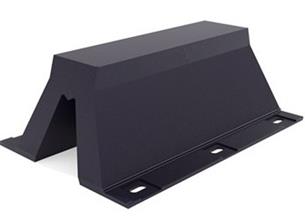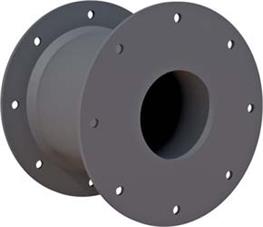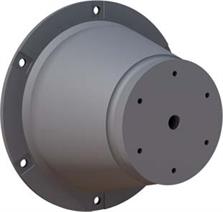1. Rubber
The selection of our rubber is strictly accordance with the requirement of ISO 17357:2002.
|
Outer and inner rubber material requirements |
|||
|
Test item |
Test method |
Required valuve |
|
|
Out rubber |
Inner rubber |
||
|
1. Before ageing |
--- |
--- |
--- |
|
1.1 Tensile strength |
ISO 37:1994 |
18 MPa or more |
10MPa or more |
|
1.2 Elongation |
ISO 37:1994 |
400% or more |
400% or more |
|
1.3 Hardness |
ISO 7619:1997 |
60 ±10 (Durometer hardness Type A) |
50 ±10 (Durometer hardness Type A) |
|
2. After ageing |
ISO 188:1998 |
Air oven ageing, 70℃±1℃ 96h |
Air oven ageing, 70℃±1℃ 96h |
|
2.1 Tensile strength |
ISO 37:1994 |
Not less than 80% of the original property |
Not less than 80% of the original property |
|
2.2 Elongation |
ISO 37:1994 |
Not less than 80% of the original property |
Not less than 80% of the original property |
|
2.3 Hardness |
ISO 7619:1997 |
Not to exceed that original property by more than 8 |
Not to exceed the original property by more than 8 |
|
3. Tear |
ISO 34-1:1994 |
400 N/cm or more |
No requirement |
|
4. Compression set |
ISO 815:1991 |
30% (70℃±1℃ for 22h) or less |
No requirement |
|
5. Static ozone ageing test |
ISO 1431-1:1989 |
No cracks after elongation by 20% and exposure to 50 pphma at 40℃ for 96 h |
No requirement |
|
NOTE: If the color of the other cover is not black, the material requirements will differ from those in this table |
|||
|
apphm: Parts of ozen per hundred million of air by volume. |
|||
Other type’s rubber, such as NR, EPDM, SBR, BR, are employed as per the special ingredient.
2. Synthetic-tyre-cord layer for Pneumatic Fenders (ISO17357:2002)
A. General
Synthetic-tyre-cord layers, commonly used in tyres, have been proven to provide strong efficient reinforcement layers in fenders, Each single layer is coated with rubber compound on both sides as well as in between synthetic-tyre-cord threads, hence isolating all cords from each other.
As contact between synthetic-tyre-cord threads does not occur, synthetic tyre cord has the advantage over other reinforcement materials such as canvas fabric of reducing friction and wears between cord threads during compression, bending and stretching, and also greatly improves fatigue resistance, endurance life, and pressure-holding performance.
B. Difference in arrangement of synthetic-tyre-cord and canvas-fabric reinforcemen layers.


C. Example of difference in the physical property of synthetic tyre cord and canvas fabric
The synthetic-tyre-cord arrangement has strength in one direction only (warp) and the canvas-fabric arrangement strength in both direction (weft and warp). Table 1 and Table 2 provide an example of the difference in physical properties between the two.
|
Table 1 Synthetic tyre cord |
|
Table 2 Canvas fabric |
||||||
|
Item |
Unit |
Warp |
Weft |
|
Item |
Unit |
Warp |
Weft |
|
Density |
Ends/inch |
24 |
2 |
|
Density |
Ends/inch |
16 |
16 |
|
Tensile strength |
N/mm2 |
20 |
0.02 |
|
Tensile strength |
N/mm2 |
11.6 |
11.7 |

 info@dolphinmarines.com
info@dolphinmarines.com

